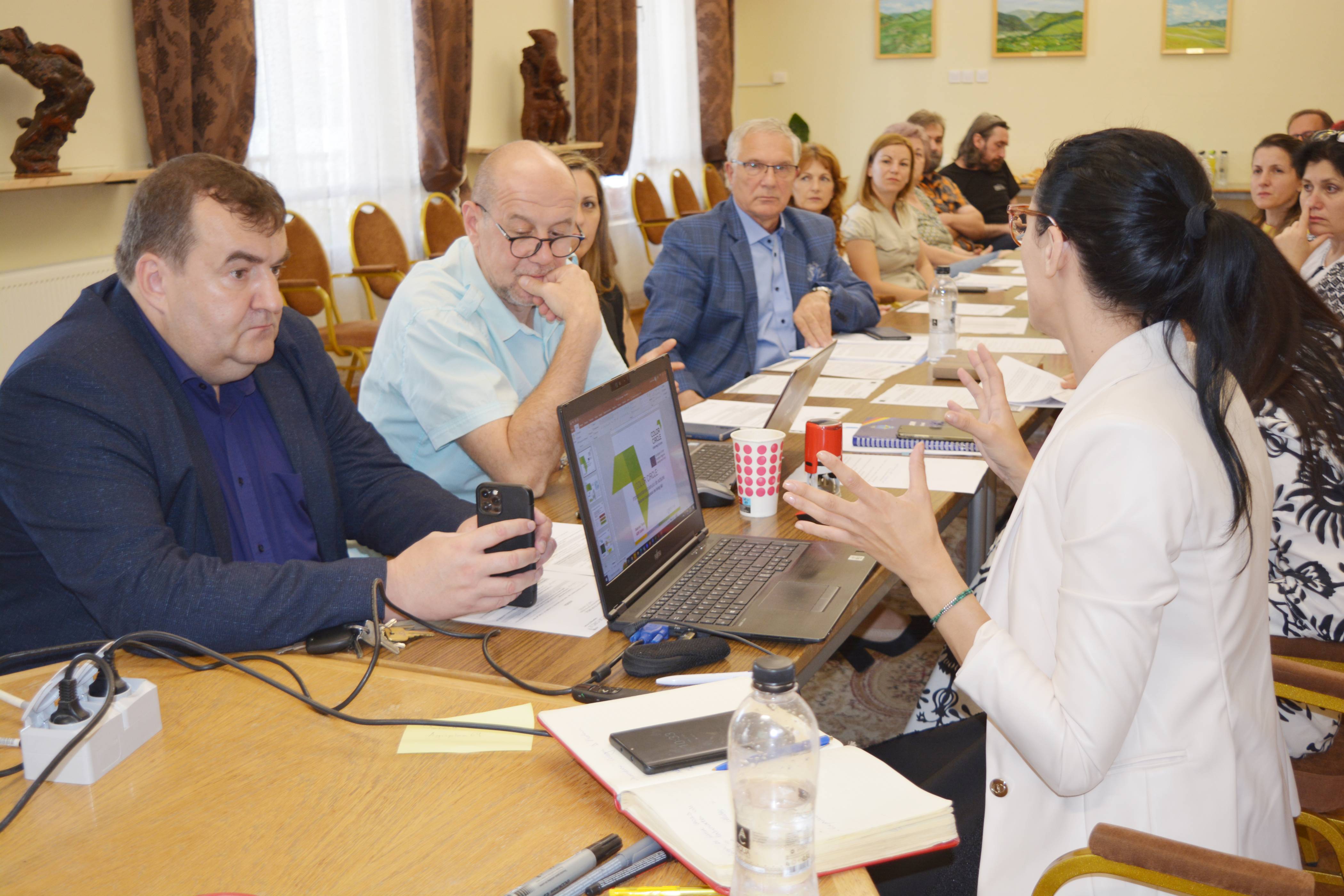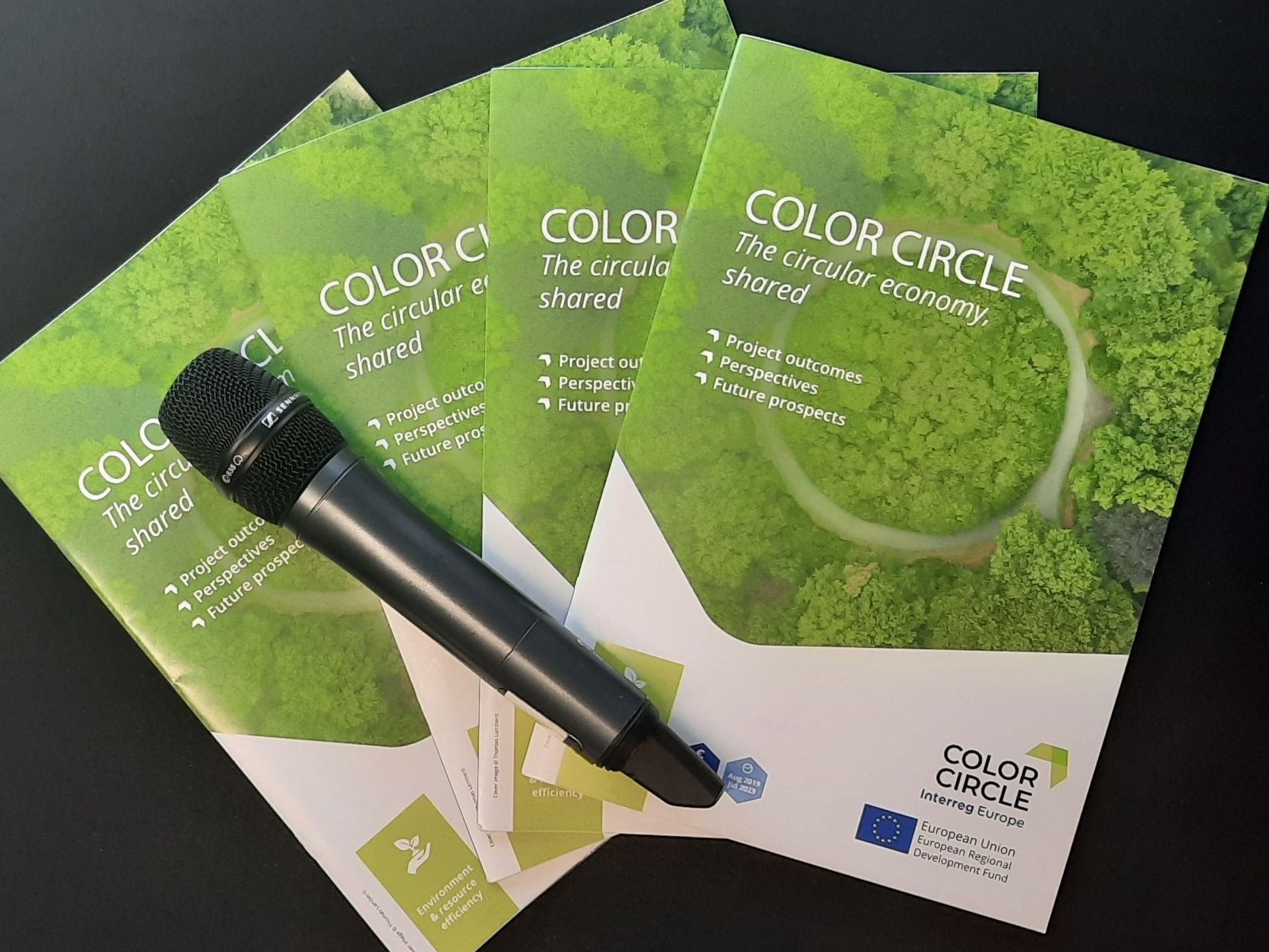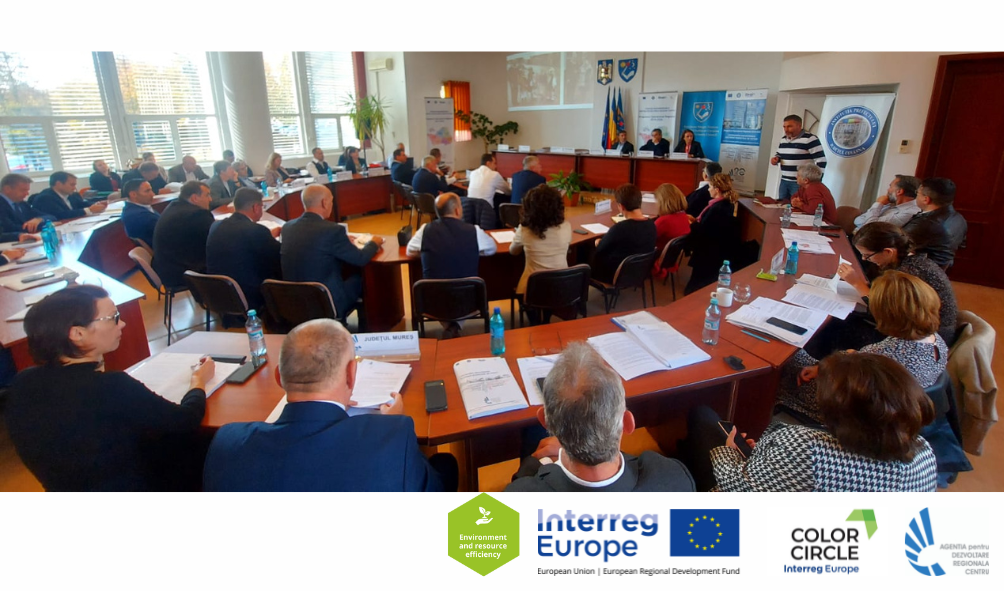
What COLOR CIRCLE means to us.
Discover the policy changes initiated by COLOR CIRCLE in our regions.
6 partners from 5 different countries, regional and local councils, public development agencies and universities, sharing good practices on circular economy, involving research capacities to empower local authorities and to improve regional public policies.
€1,209,041.00
Environment and resource efficiency
Until quite recently, Burgundy-Franche-Comté was not one but 2 different regions. A challenge is to expand the policy to the new perimeter. The targetted policy instrument aims at increasing the production of renewable energies. Expected beneficiaries are local authorities, energy unions, social housing landlords, agricultural cooperatives, etc. There are 2 main reasons why this policy should be improved
Priority axis 4 – “Community-led local development”, Investment priority 9d “Investing in community-led local development strategies”, Specific objective 4.1 ”Strengthening community-led local development to improve the quality of life in rural areas and mobilizing local potential”
In comparison with other EU countries, the Czech Republic is home to many more self-governed municipalities. Approximately 80% of the municipalities have fewer than 1,000 inhabitants and have the most serious problems in providing basic services to the population. The highest number of small municipalities is located in the Central Bohemia. All rural areas of the Czech Republic have similar characteristics (poor basic services and infrastructure, poor functioning of local economy, transport or insufficient use of resources) Central Bohemia has to deal much more with intraregional disparities. Peripheral territories are mostly rural and sparsely populated. The metropolitan part with the capital in the middle is overpopulated . In the context of thse disparities and (global) trends, innovative solutions and policy instruments are becoming part of municipal interest. The role of Local Action Groups (LAGs) represent the "bottom-up" approach of community-led local development as a main feature of the priority axis 4. This axis contributes to the fulfilment of Thematic objectives (including Preserving and protecting the environment and promoting resource efficiency).
Regiodeal North East Friesland aims to improve the region of North East Friesland by tackling the development challenges associated with a decreasing active population and resource shrinkage. The ambition is to increase the Gross Regional Product (GRP) by € 400 million in 2025 through innovation, lifelong learning and partnership. The main issue at stake is the embedding of a circular economy (CE) in the region that is both economically and ecologically viable. More specifically an area-oriented CE should contribute to an increase in: income; local GRP; labour; education level and inhabitants. Furthermore, sustainability theme’s like biodiversity, landscape, nature and energy are important rural policy issues.
A major measure in the RegioDeal consists in a Fjildlab (Living Lab). It is structured as a quadruple helix, based on a cooperation between local authorities and stakeholders. The cooperation mechanisms of the Fjildlab are key to its success. How can the governance arrangements be monitored and improved? How can local authorities ensure a smooth landing of innovations coming from the Fjildlab in their community? How can research support local authorities ? Knowledge of effects of area-oriented CE is required to give permits, locational policy/site policy and to develop/change policy on biodiversity, nature, landscape etc. Important as well is that the Fjildlab will give insight in which policies are obstructing so policy can be changed or exemption can be granted.
PA13 aims to enhance the life quality of the urban population and supports physical, economic and social regeneration of deprived small and medium communities (under 100.000 inhabitants). Its implementation involves multi-stakeholders cooperation including local authorities, social services and health, education, culture, religion, social assistance or non-governmental organizations. The projects can be implemented by local authorities and/or partnerships between local authorities and NGOs.
During the preparation of the programming period 2014-2020, circular economy was not recognized as a policy priority area in the European Union. Therefore, within ROP 2014-2020 are applied only the principles of sustainable development and equality as horizontal priorities meaning that those projects that make an effort to integrate effectively the horizontal priorities into the project will receive a higher score and will be more likely to obtain funding. Within these sustainable development is assessed in its broadest sense which covers economic growth, social cohesion and the protection of the environment. This way most of the projects involve sustainable development measures.Through this project we aim to improve PA 13 of ROP 2014-2020 by creating a better understanding of these horizontal priorities and through higher focus on resources efficiency and local resources use and circular economy concepts at the project elaboration and implementation.
The Urban Strategy for Comprehensive, Sustainable Development of the Urban Agglomeration of Granada and the Metropolitan Southwest area is funded by the ERFD through a call for proposals made by the Ministry of Finance in the framework of the urban axis of the Spanish OP ERFD for Sustainable Growth 2014–2020.
The strategy has been designed with the collaboration of town councils, stakeholders and citizens. It includes an implementation plan that will be funded with ERFD 25 M€ in the framework of the following objectives:
- Promoting ICT: Technological platforms to manage urban problems (mobility, urban habitability, energy consumption); Open Government; Digital Administration
- Promotion of a sustainable, urban mobility: Inter-municipal Mobility Plan; Transport exchange platforms; Promotion of cycling mobility; Traffic pacification
- Improvement of energy efficiency and the rise of renewable energy
- Promoting the protection and development of natural and cultural heritage, especially this one with a tourist interest
- Improvement of urban spaces and its environment: Recovery of degraded or empty urban areas; Rehabilitation / maintenance of green areas; Improvement of air quality and acoustic comfort
- Physical, economic, social regeneration of most disadvantaged urban areas (Social Inclusion and Fight against Poverty): Improvement of urban spaces and its environment; Revitalization of retail trade; Support to entrepreneurs; Itineraries for social, labour integration

Discover the policy changes initiated by COLOR CIRCLE in our regions.

VHL supports the circular transition in the agricultural sector.

The Regional Development Agency Centru held a meeting to test the functionality of a living lab and to draft a concept note for the Open Innovation Platform.

Update on the implementation of the action plan in the Bourgogne-Franche-Comté region.

Update on the implementation of the action plan by our Spanish partner.

The action called "Cirkulárka" added a circular component to the expert services provided to SMEs.

The last partner meeting took place on 3O/03/2023.

Wrapping-up 4 years dedicated to connecting research and local authorities.
On 18 July 2022 the Deputy for Employment and Sustainable Development of the Provincial Council of Granada signed the document containing the Action Plan.

On 19/10/2022 the Regional Development Board of Centru Region Romania (PP5) adopted the COLOR CIRCLE action plan.